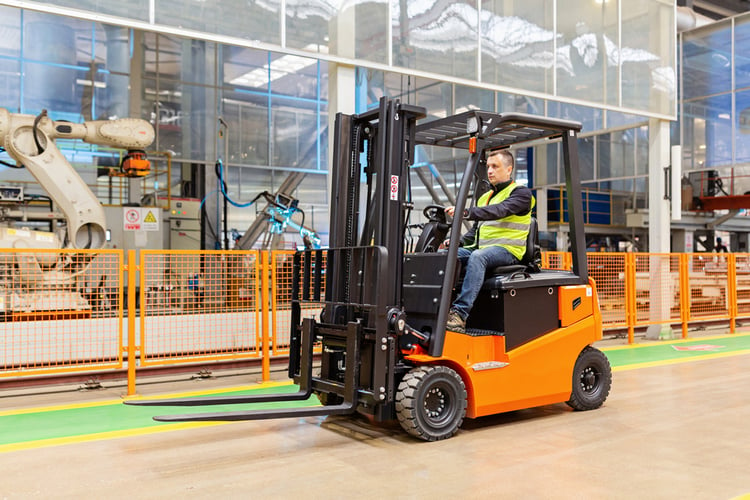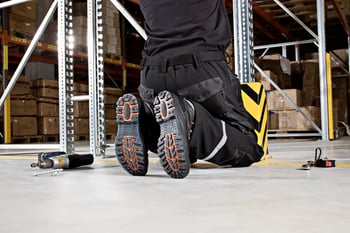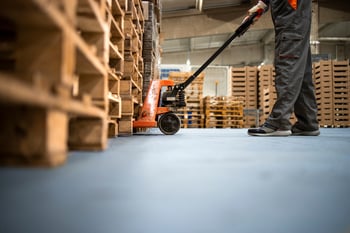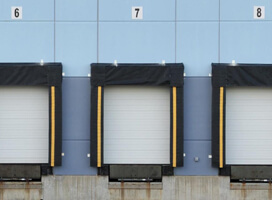
Most warehouse jobs will require that workers be on their feet for long periods and do some repetitive lifting. So it's important to dress in comfortable clothing that allows movement. But many warehouses also have dress codes and value safety. Some even require employees to wear uniforms. Here are some tips for appropriate clothes for a warehouse job, whether you decide everyone should wear the same thing or not.
Warehouse Uniforms — Are They Necessary?
Requiring everyone in your warehouse to wear exactly the same thing probably isn't necessary. Instead, it will end up being costly for you and an inconvenience for your workers. Employees come in all shapes and sizes, so having uniforms on hand in dozens of sizes isn't always practical. Instead, many warehouses opt for a strict dress code that considers productivity, safety, and comfort.
Essential Components of a Warehouse Dress Code
A warehouse dress code needs to be as practical as possible. When your business is reasonable about allowing employees some choice in how they dress, it will go a long way in improving your organization's overall culture. Here are a few essential components of a warehouse dress code.
Pants
Employees should be permitted to wear pants or jeans in the warehouse, provided they are well-fitting. Baggy pants can create a serious safety concern, so this should be explained in your dress code. You can decide whether you will limit employees to a specific color. For example, darker colors are better at hiding dirt and stains, so they may appear more professional.
Shirt
Your business will need to decide what type of shirts are appropriate for your warehouse employees to wear. Do you want to provide everyone with logo shirts to create some team camaraderie? If not, be specific about whether polo shirts or t-shirts are permitted as part of your dress code. It's also important to note whether you will disallow certain things like political messages or images that may be considered offensive.
Work Shoes
 Proper footwear is essential for warehouse work for several reasons — comfort and safety. Employees spend many hours at a time on their feet, so they must wear high-quality footwear to prevent foot and back issues. Shoes with wedge soles provide excellent support. Safety is another concern. If a heavy object falls on an employee's foot or they get too close to moving equipment, it can lead to a serious injury. Steel-toed shoes can provide significant protection from these hazards.
Proper footwear is essential for warehouse work for several reasons — comfort and safety. Employees spend many hours at a time on their feet, so they must wear high-quality footwear to prevent foot and back issues. Shoes with wedge soles provide excellent support. Safety is another concern. If a heavy object falls on an employee's foot or they get too close to moving equipment, it can lead to a serious injury. Steel-toed shoes can provide significant protection from these hazards.
Headwear
Many warehouses overlook headwear, but this is an essential part of your dress code. Employees should be permitted to wear hats and beanies to keep their core body temperature warm during cold weather. Headware can also move unruly hair out of the way so that it doesn't get caught on machinery or end up in a consumer's box during order fulfillment.
Safety Equipment
 Safety should be a priority in every warehouse and distribution center. While personal protective equipment (PPE) isn't necessarily a dress code requirement, it makes sense to include this so you can drive home its importance. Remind workers what equipment they will be required to wear, depending on their job duties. These might include things like:
Safety should be a priority in every warehouse and distribution center. While personal protective equipment (PPE) isn't necessarily a dress code requirement, it makes sense to include this so you can drive home its importance. Remind workers what equipment they will be required to wear, depending on their job duties. These might include things like:
- Hard hats
- Safety vests
- Eye protection
- Hearing protection
Many workers are also asked to wear technology equipment, like wireless headsets and sensors, to assist with work. Their choice of clothing should be compatible with this equipment.
Optional Warehouse Attire
Some warehouse attire should be required (see above). But, depending on the conditions in your warehouse and your worker's preferences, other items might be optional. Here are a few examples.
Jackets
If your employees are asked to work in a cold warehouse during the winter months or deal with refrigerated items, they'll probably want to wear jackets. This is about worker comfort but can also be a safety issue depending on the temperature extremes.
Gloves
 Gloves may also be necessary to keep workers' hands warm in cold temperatures. Many workers will also opt to wear gloves to protect their hands from minor scratches or drying out. These are generally accepted as long as they don't interfere with productivity.
Gloves may also be necessary to keep workers' hands warm in cold temperatures. Many workers will also opt to wear gloves to protect their hands from minor scratches or drying out. These are generally accepted as long as they don't interfere with productivity.
Coveralls
If your workers are doing particularly dirty work, such as machinery maintenance or driving forklifts, you may wish to provide coveralls. These go over regular street clothes to provide additional protection from grime and some minor hazards.
What Not to Wear in a Warehouse
Even if you don't have a warehouse uniform, it's a good idea to create a dress code that outlines what employees should wear in the warehouse to improve safety and productivity. There should also be a list of items that aren't appropriate for warehouse work. These might include:
- Open-toed shoes — Shoes like flip-flops are unacceptable in a warehouse. They don't protect workers' feet and can lead to trip and fall injuries.
- Baggy clothing — Clothing that isn't well-fitting can present a safety issue because it can get caught on machinery or shelves or create a tripping hazard.
- Shorts — Some warehouses don't allow workers to wear shorts of a certain length (too short) or ones that are too baggy.
- Jewelry — Wearing jewelry is considered a hazard in many warehouses because it can get caught on shelving or machinery and lead to serious injuries.
Employees want to be dressed comfortably at work. In a warehouse, this is certainly possible. But there must be a balance between comfort, utility, and safety. You can create a dress code or uniform that strikes that balance to ensure efficiency and satisfy your workers.












